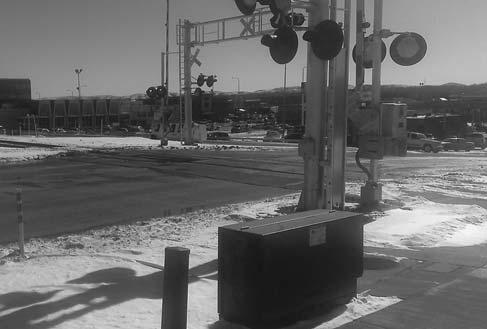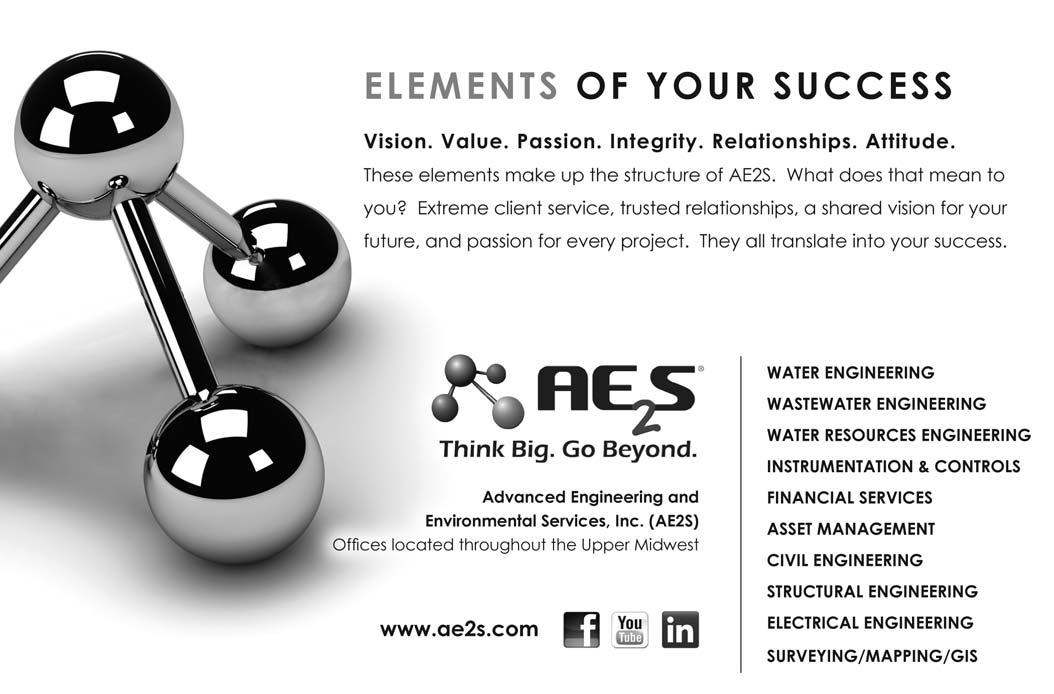
4 minute read
Crossing a Railroad with City Utilities
By Jeff Mehlhaff, Director of Municipal Electric Services
Railroad Crossings
Advertisement
Railroads over the last century have spurred development and sustained many communities across the State of South Dakota. Railroad tracks developed close to and through many cities across South Dakota. As cities have grown, so has the need to expand the municipality’s infrastructure. Crossing under the railroad tracks with city owned utilities is sometimes required because of the city’s geography.
When a municipality has to cross the railroad’s tracks, in the railroad’s right-of-way, there is generally an application and fee charged by the railroad. The fee has been negotiated between the railroad and municipality in some instances. The fees have ranged from hundreds to several thousands of dollars without any specific reasoning for the dollar amount. Much of the time, if the city needs to cross under the railroad with water, sewer, storm sewer or electric line, there has been no other choice than to pay the fee. HB1194, recently signed by the Governor, modifies and clarifies statutes related to crossing a railroad with a utility line.
HB1194 Affected Utilities
Recent legislation, HB1194, addresses a new uniform way of handling a railroad crossing with a utility line. The bill addresses, specifically, crossing the railroad’s tracks with a utility line when crossing through the railroad’s right-ofway. Utility line includes water, electric, sewer, storm sewer, telephone or other kind of utility line. This bill affects all city utilities when crossing under railroad tracks. The language in the bill would apply any time a utility is crossing the railroad tracks with a city utility line in the railroad’s right-of-way. HB1194 is the default process for a crossing if the utility and railroad cannot agree. Nothing in the bill prevents a railroad and city utility from negotiating their own agreement.
Application and Details
HB1194 requires a crossing application for any utility crossing under the railroad’s tracks with a utility line. The application needs to include a drawing showing the location of the proposed crossing and the railroad’s property, tracks and wires/lines that the utility will cross. The railroad may have additional requirements or special circumstances in certain crossings, but the utility has the right to object to those additional requirements.
One-time Standard Crossing Fee, Except in Public Right-of-Way
HB1194 sets a one-time standard crossing fee of $750. The standard crossing fee of $750 is in lieu of any license, permit, application, processing fee, or any other fees or charges by the railroad for direct expenses incurred by the railroad. There is no fee for a crossing within the public right-of-way. Any time a utility crosses in the public rightof-way there will be no standard crossing fee.

Past Payments and Previous Agreements
Another provision in the bill addresses past payments for crossings. If a total of $750 has already been paid over the life

of the crossing, no additional fee is required. If a utility had yearly or ongoing crossing fees they would no longer have to pay those yearly or ongoing fees if the total paid to date was at least $750. The utility also has to pay any reasonable flagging expenses associated with a new crossing.
Crossing Railroads with City Utilities under New Legislation
Depending on the circumstances of your potential railroad crossing, it may make sense to cross where a public rightof-way exists. If you need to cross the railroad try to identify where public right-of-ways exist in regards to the railroads tracks. Crossing in the public right-of-way eliminates the fee, which the railroad can charge.
Sometimes it makes more fiscal sense to cross the railroad directly in the railroad’s right-of-way. If a municipality needs to cross the railroad in the railroad’s right-of-way try to cross in places where the railroad will not need additional requirements. Sometimes moving the utility line up or down another 20 to 100 ft. can make all the difference to the railroad.
If issues, additional requirements or special circumstances exist, where the railroad and municipality can’t agree, the South Dakota Public Utilities Commission (SD PUC) has the ability to hear the dispute and make a determination in the case. It is less likely to have issues if the municipality is crossing in the public right-of-way.
If you have any questions regarding how the new legislation on railroad crossings could affect a potential crossing, please contact your city attorney. Nothing contained in this document should be taken as legal advice.
Innovations in American Government Awards
Offered by Harvard Kennedy School’s Ash Center for Democratic Governance and Innovation, the Innovations Award ($100,000) is the nation’s premier award for the public sector. It recognizes programs that demonstrate creative and effective government at its best. Also available this year is the Roy and Lila Ash Innovations Award ($100,000) for Public Engagement in Government. Applications are due on June 20, 2014 and are availableat www.innovationsaward.harvard.edu.











